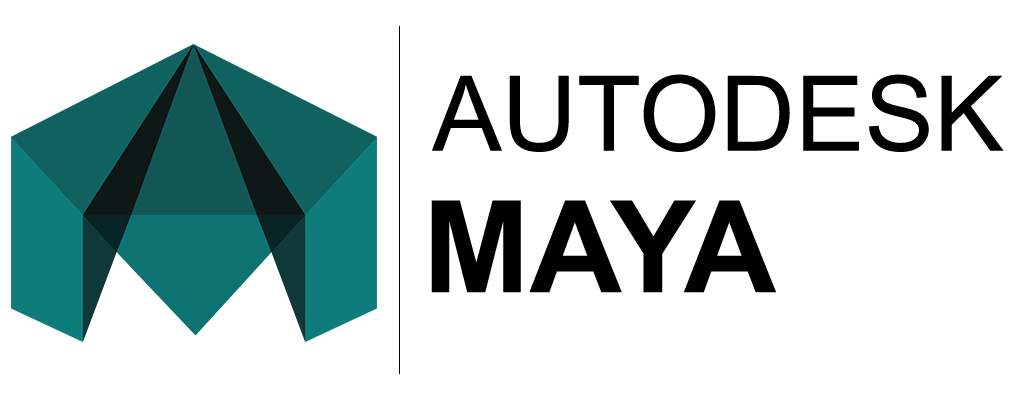Outline:
- Autodesk Maya
- Polygons
- Topology
- Retopology
- Assignment 01 (retopology)
Autodesk Maya
Autodesk Maya:
Autodesk Maya: one of the world’s leading software applications for 3D digital animation and visual effects. Maya provides a comprehensive suite of tools for your 3D content creation work ranging from modeling, animation, and dynamics through to painting and rendering to name but a few.
Polygons
Polygons:
Polygons are straight-sided shapes (3 or more sides), defined by three-dimensional points, vertices, and the straight lines that connect them, edges. The interior region of the polygon is called the face. Vertices, edges, and faces are the basic components of polygons. You select and modify polygons using these basic components. (Autodesk)

www.cartoonstock.com
Polygonal Components
Polygons are made of:
- Vertices (1D)
- Edges (2D)
- Faces (3D)
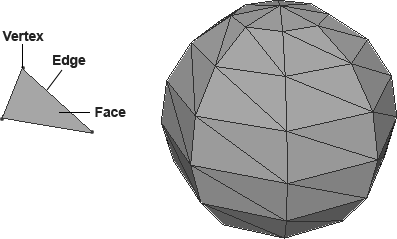
Polygon Types:
We typically define the polygons into three categories; tri (3-sides), quad (4-sides), and n-gon (5-or-more-sides).
Avoid tri's. Attempt quads. Never n-gons.
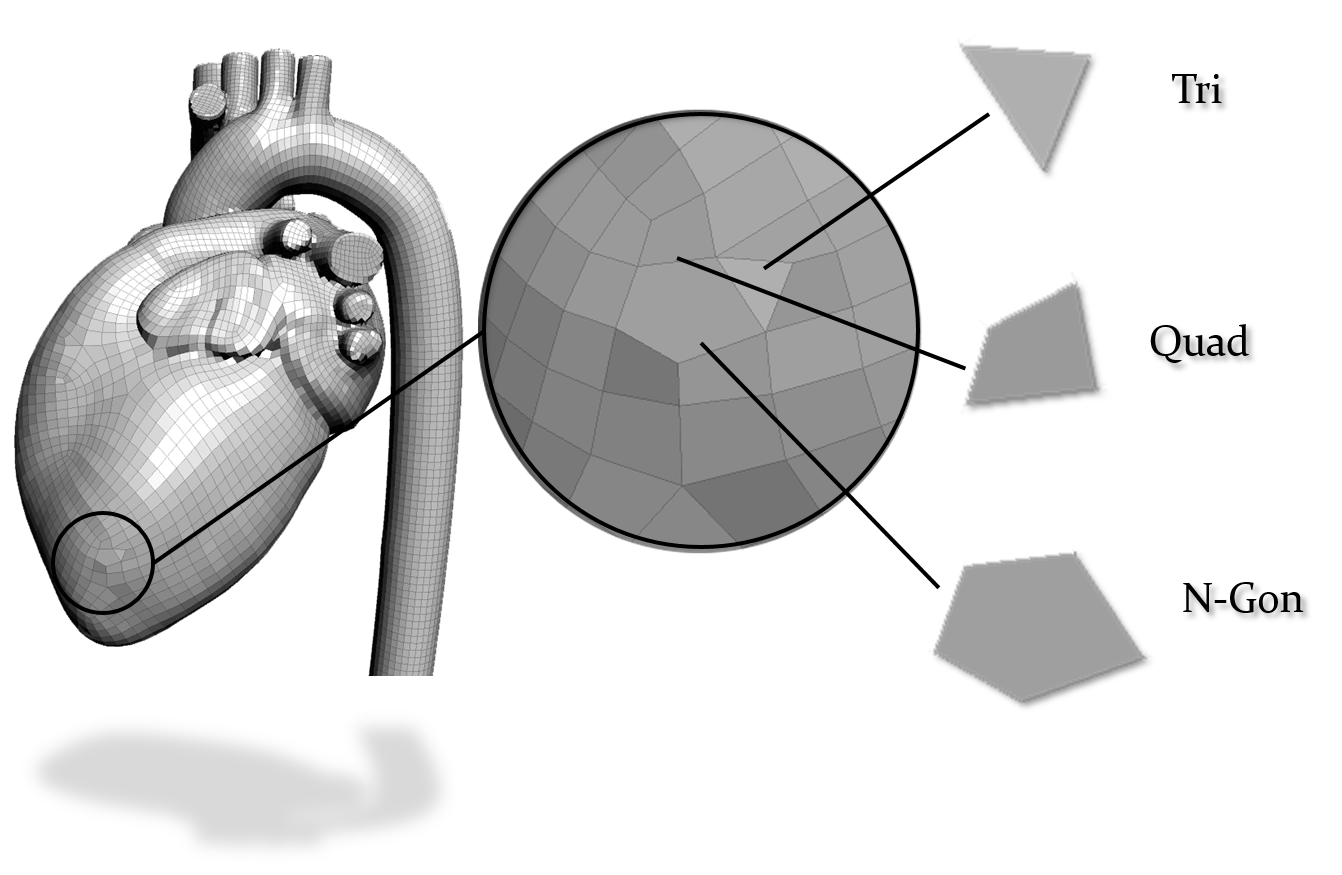
Polycount:
The number of polygons needed to create a smooth model is dependent on the distance from the camera.
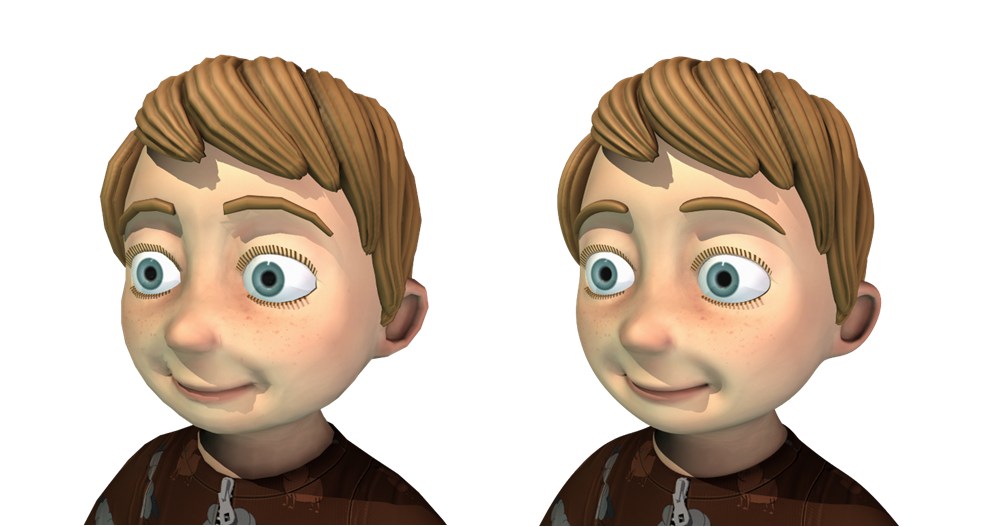
When viewing a model during a close up more polygons are necessary to avoid faceting (seeing individual polygons).
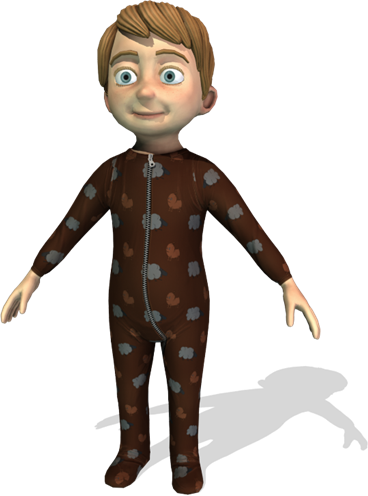
Polycount is a balance. More polys will result in a smoother surface but be more costly computationally. Too few polys will appear rough and irregular but process quickly.
Excellent video on polygons
Topology
Topology:
Topology refers to the geometric surface characteristics of a 3D object, characterized by polygon distribution and edge-flow.

www.cgmemes.blogspot.com
Click on the button with three slashes third from the top left. Then click in the topology section to see the wireframe of the model.
Edge Loops (and Edge Rings):
The model should have edges that flow parallel along the surface (edge loops) and edges that wrap around the form (edge rings). Beyond the look of the model and lack of errors this is the primary focus of how well the model has been produced.
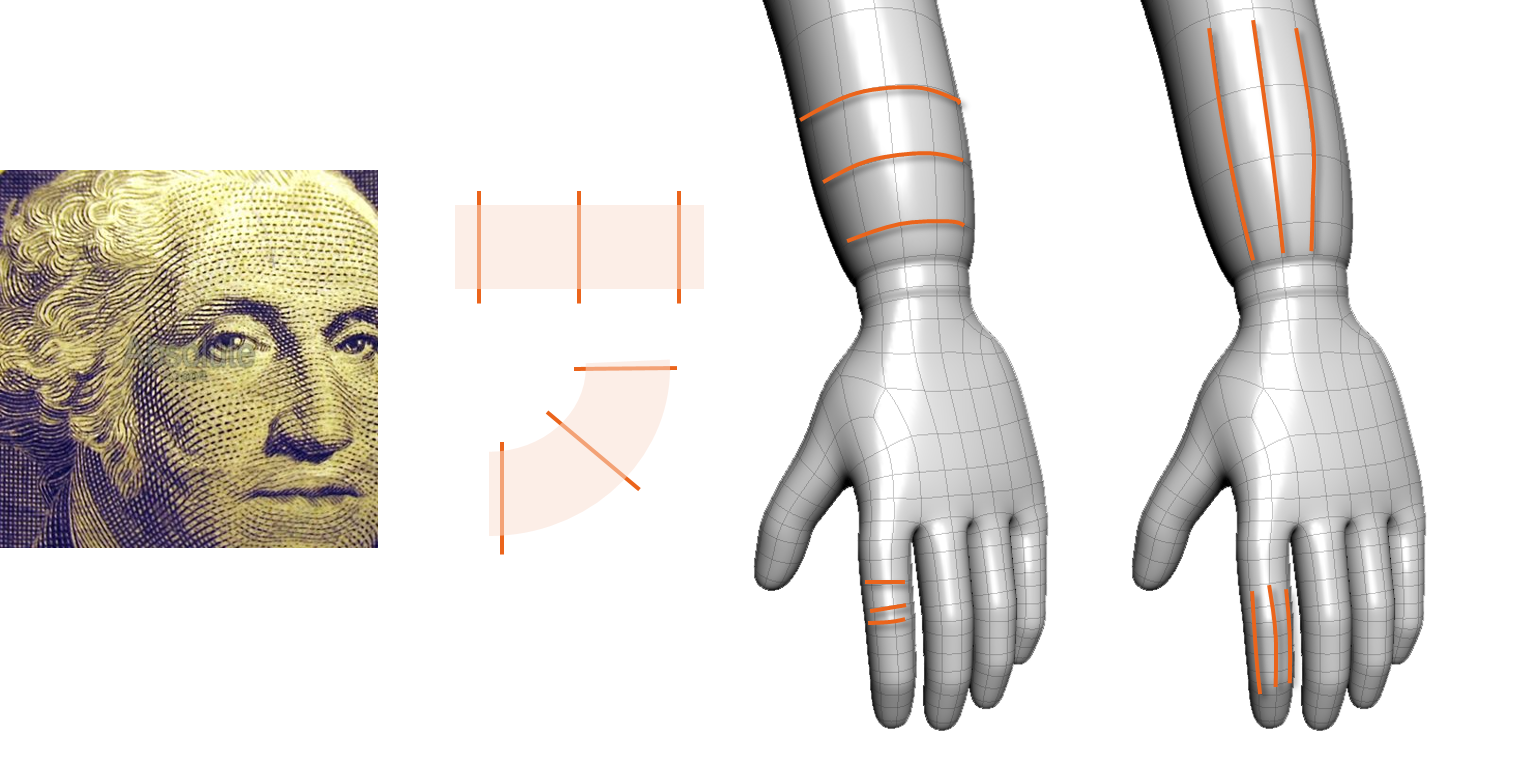
Gridflow:
The collection of edge loops and edge rings that form the "grid" that forms the surface of the model.
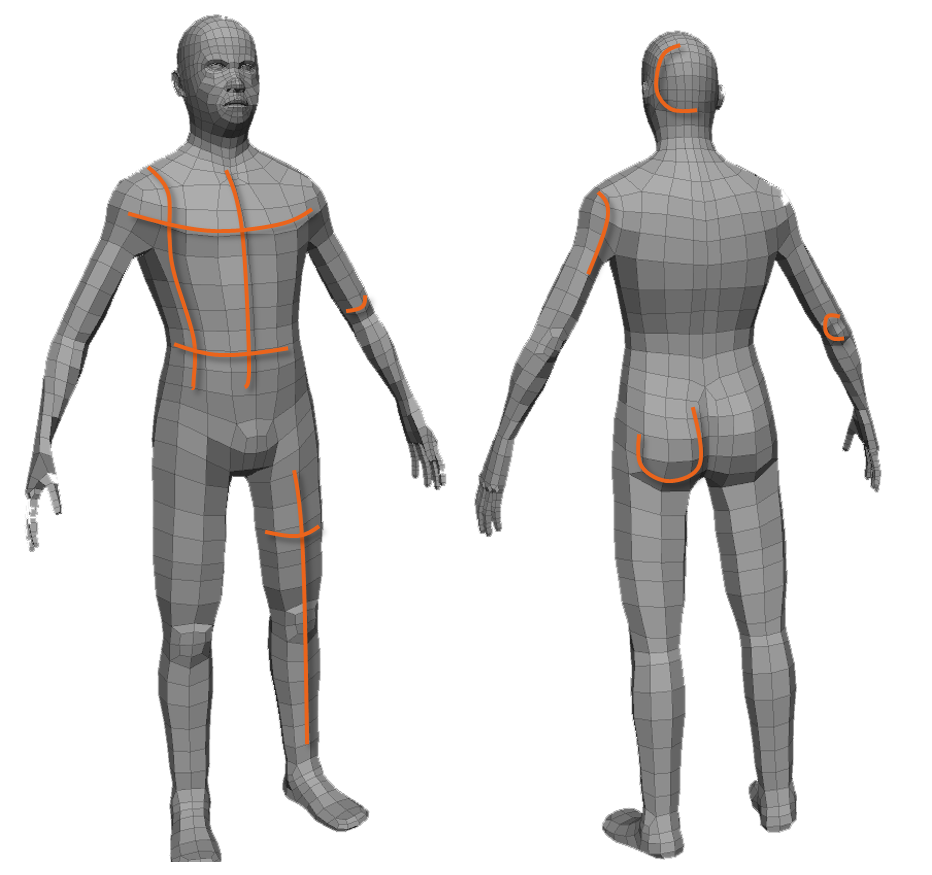
Deformation:
You need to include more geometry at points of articulation. This means adding more edge loops at shoulders, elbows, wrists, fingers, for example.
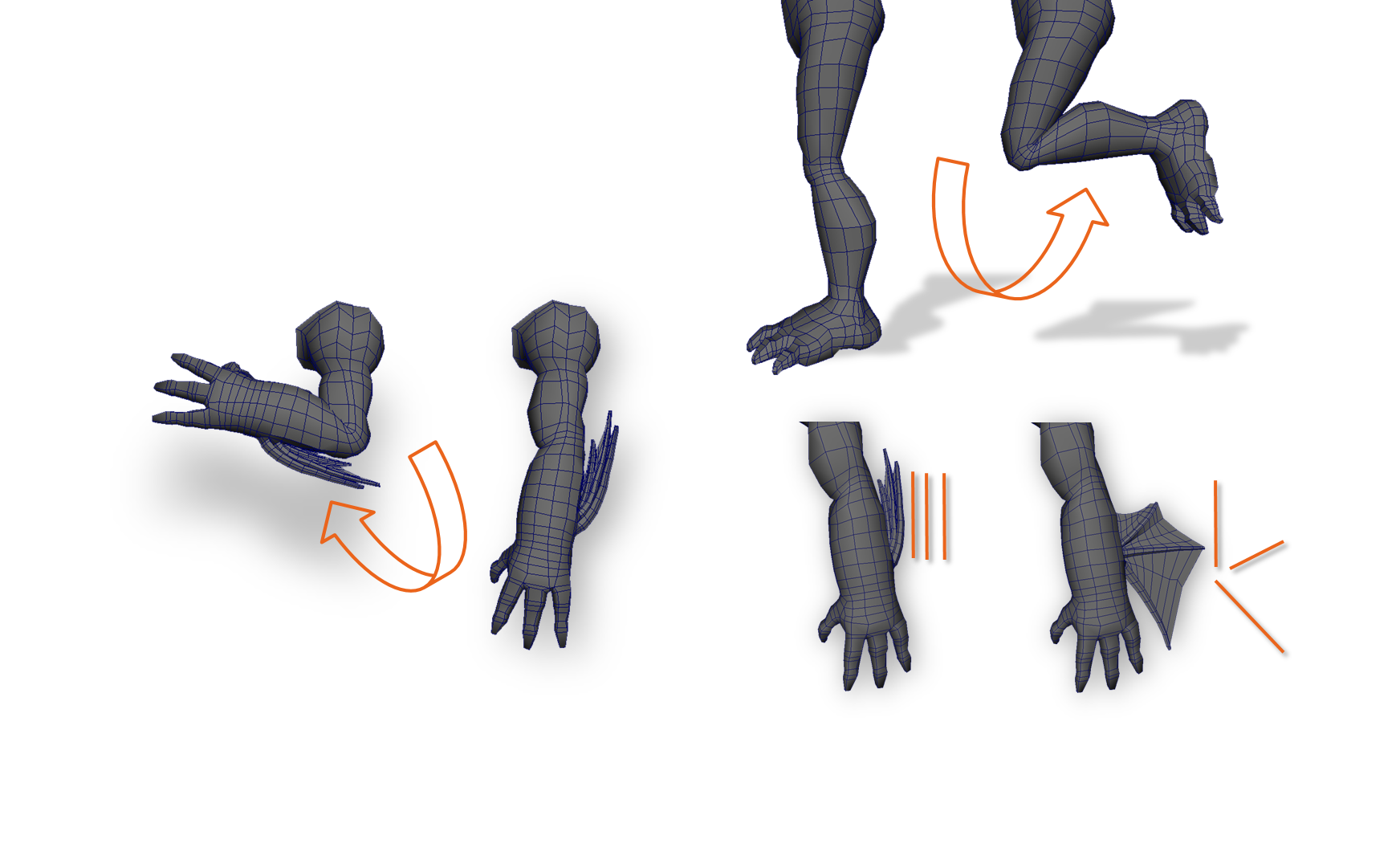
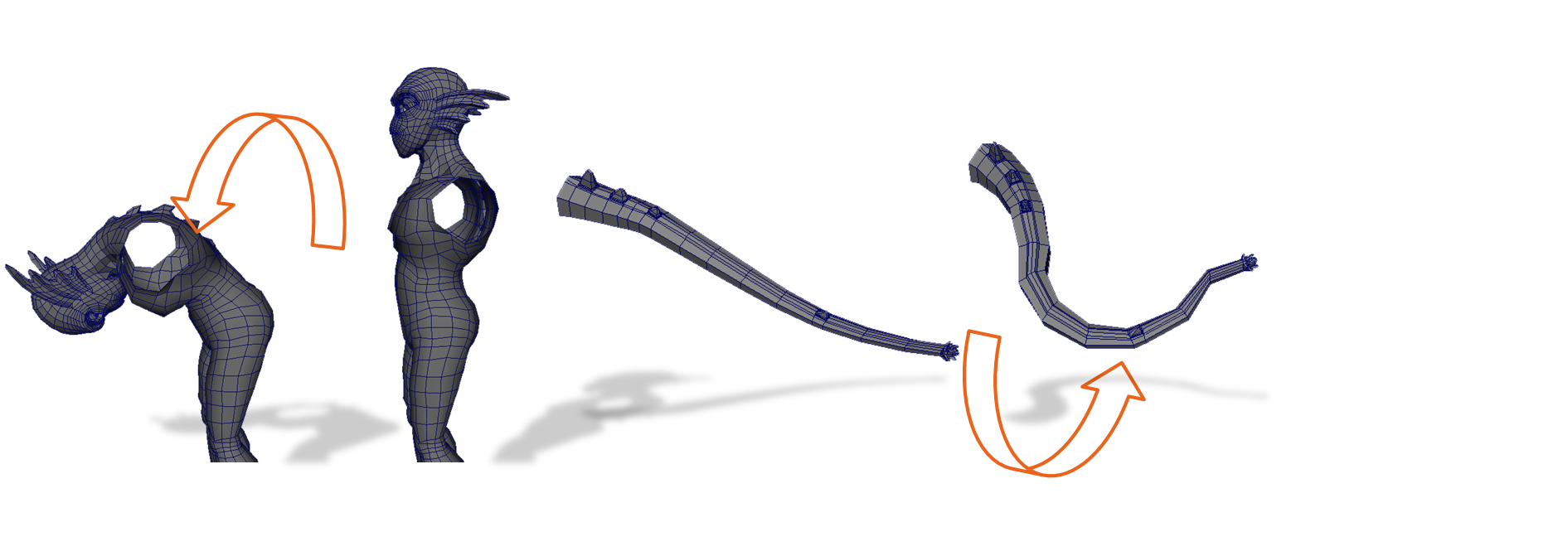
Some areas of articulation are more broad such as in the back or in a tail.
Stars/Poles
Wherever more or less than four edges meet is considered a star or pole. This is inevitable and unavoidable. When you have an edge flow terminate you will see a three star pole. When you have an edge flow run into another you will end up with a five or more star pole. A five pointed star is acceptable but you do not want more than that and you do not want an excessive number of poles if possible.
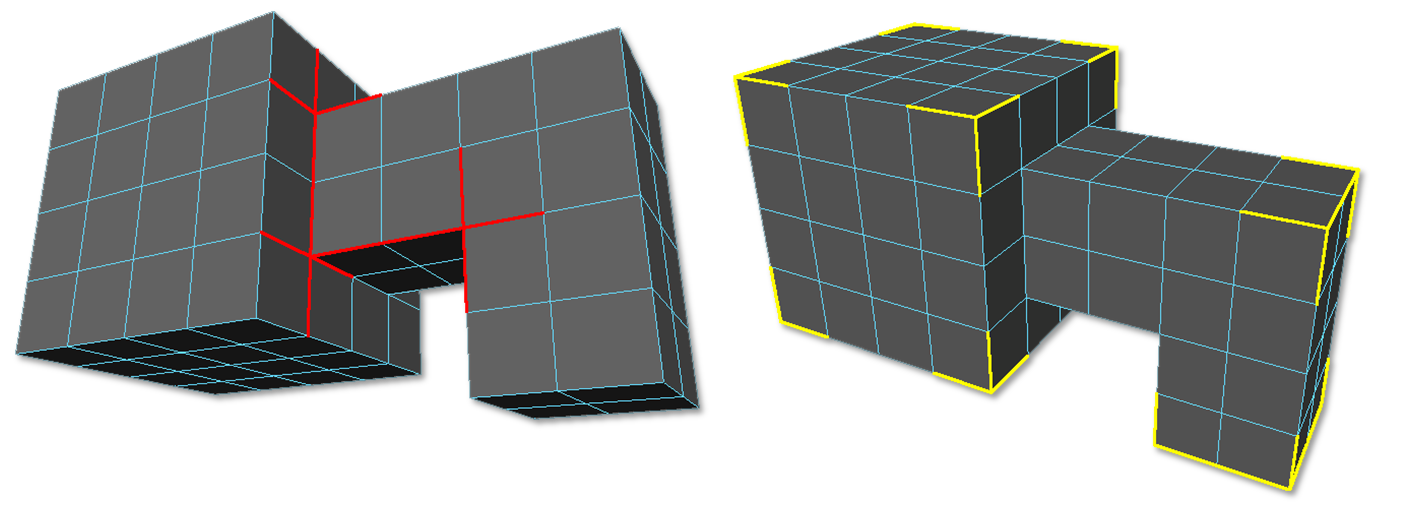
Notice where the extruded area inserts into the base there are five edges (in red). At the tips where the form ends there are 3 edges (yellow).
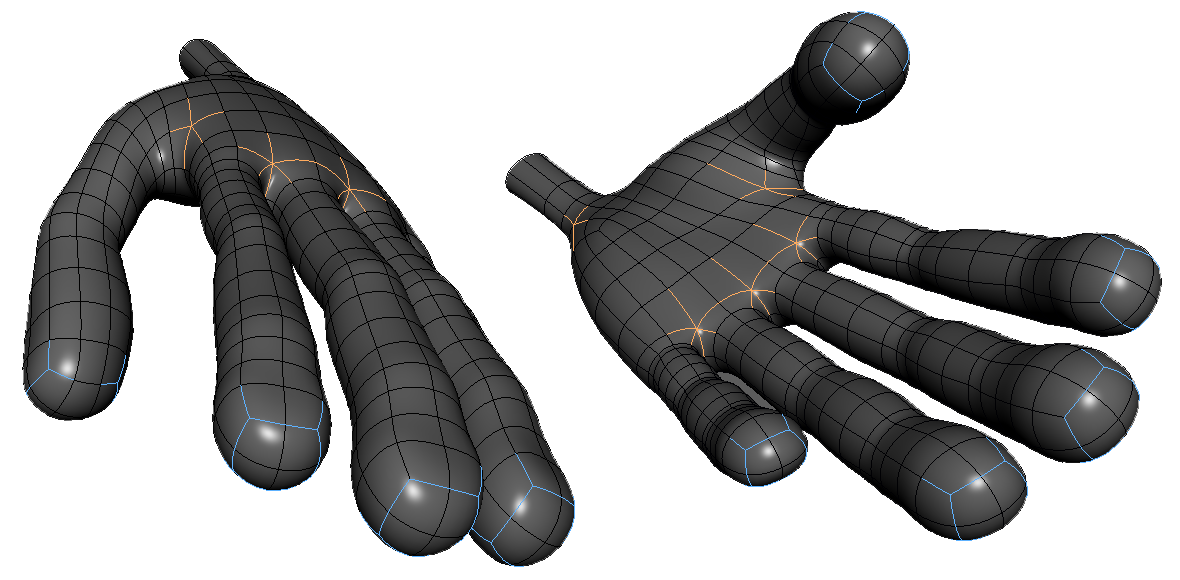
practical example in a hand.
Retopology
Retopology:
Topology refers the polygonal characteristics of the surface of a 3D model. Retopology is simply the process of redefining the topology. Traditionally this is done by drawing on top of the model.
ZBrush has a very good algorithm to automatically retopologize a model. Although this a great tool to quickly remake the model it lacks control. Zbrush also has a toolset to produce a retopologized model by manually drawing it but it can be cumbersome and lack control. Therefore, I suggest utilizing Maya for this task.
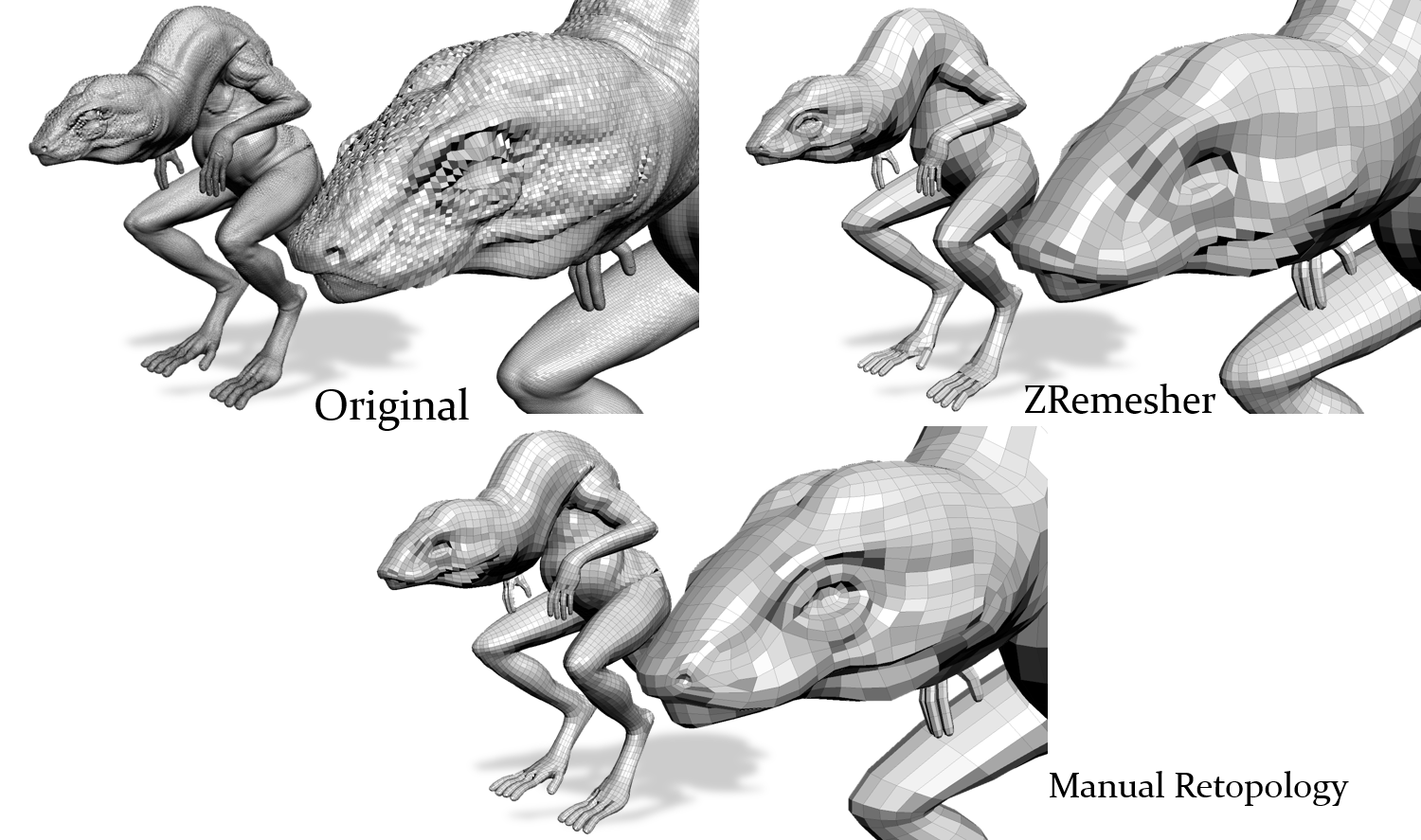
Assignment 01
Cartoon Model
Your first project will be completed partially in class and out of class. You will design and model a cartoon style model. This may be anything you'd like that would be suitable for a feature length animation or nintendo style game. You are looking for strong exaggerate clean forms. The model itself should be low-poly, fully textured (color, specular, and normal map), and ready for implementation into an animation pipeline.
For Next Class: Complete the retopology of the model
You will be graded on the following:
- Geometry
-
No errors in the geometry such as non-manifold geometry, un-merged vertices, or lamina faces.
- Appropriate poly-count. Few tri's and no n-gon's. Few poles/stars.
-
- Topology
-
Strong consistent gridflow that supports the form well.
- Edge loops wrap around the areas of deformation correctly.
-
- Texturing
-
UV maps are projected, manipulated, and laid out appropriately.
- A varied and detailed color map is produced. Specular (shininess) map is produced.
- Funtional normal map is baked from high resolution sculpt and applied correctly.
-
- Creativity & Craftsmanship
-
Well structured, clean model.
- Novel, unique design.
-
Resources:
- You can find the rubric under the Assignments content folder in Blackboard.
Assignment 01 Tutorial Video

